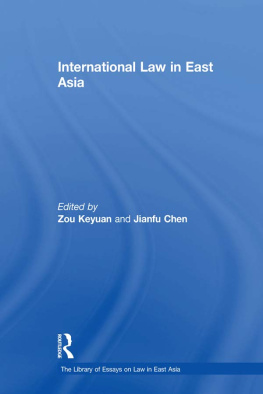International Solidarity in the Low Countries during the Twentieth Century
International Solidarity in the Low Countries during the Twentieth Century
New Perspectives and Themes
Edited by
Kim Christiaens
John Nieuwenhuys
Charel Roemer
ISBN 9783110634310
e-ISBN (PDF) 9783110639346
e-ISBN (EPUB) 9783110635195
Bibliographic information published by the Deutsche Nationalbibliothek
The Deutsche Nationalbibliothek lists this publication in the Deutsche Nationalbibliografie; detailed bibliographic data are available on the Internet at http://dnb.dnb.de.
2020 Walter de Gruyter GmbH, Berlin/Boston
Introduction
The Power, Borders and Legacies of International Solidarity in the Low Countries
Kim Christiaens
John Nieuwenhuys
Charel Roemer
The wars, divisions and conflicts that have long dominated our understanding of the past hundred years were only one side of the story of the twentieth century. Especially as the century came to a close, accounts began to characterize it with epithets that highlighted another side of the past. It became the story of the century of NGOs, the power of global civil society and the age of nonviolent resistance. An impressive web of social movements and campaigns indeed entered the arena of national and international politics in the decades following the end of the First World War, building connections real and imagined with other societies and causes across geographical boundaries. Apparently little hampered by language differences, distance, or national borders, social movements were galvanized by causes across the globe, ranging from civil wars in Spain or Central America and revolutionaries in Cuba or Vietnam to apartheid in South Africa or the plight of dissidents in Eastern Europe. One of the most conspicuous concepts that drove this bonanza of border-crossing activism was international solidarity, which inspired a variety of campaigns that not only focused on different countries but also on different issues, ranging from labor rights and world peace to anti-colonialism and fair trade. These international solidarity cultures have left an important yet often forgotten imprint on present-day societies and international relations, and have been remembered as an essential part of twentieth-century history. The international solidarity campaigns of the past decades have been considered, in many respects, the trailblazers of present-day social and cultural globalization.
Despite this impact and legacy, however, research on these campaigns has long been rather limited and fragmented. For many decades, scholars and especially historians have shown little interest in the study and history of international solidarity or internationally oriented social movements. International solidarity as a field of historical research began to emerge in studies of trade union work, the fight for womens rights, or the ultimately ineffective attempts to prevent the Second World War, but these studies remained rather insular. It was only in the last decade of the twentieth century, at the beginning of the 1990s, that there emerged a flood of scholarly attention to the history (and potential) of what became then dubbed transnational activism. The end of the Cold War was seen as the breakthrough of a global civil society: studies highlighted the role of transnational networks and civil society and their potential for democratization. Some went as far as to credit them with ending the Cold War and sweeping away the remainders of colonialism and apartheid. From the very beginning, this field of research was predominantly spearheaded and dominated by political and social scientists, who occasionally also delved into some historical precursors and connections of present-day globalized campaigns and NGOs. Political and social scientists were for instance dominant in most of the early research on the so-called new social movements which mobilized in the 1960s, 1970s and 1980s around immaterial and transnational values and themes such as peace, environment, gender, human rights, or anti-colonialism.
Historians, however, eventually followed suit. Especially from the beginning of the 2000s onwards, many historians have become fascinated with the history of international solidarity movements. This growing interest was intimately linked to a so-called transnational turn in historiography, but also benefited from the growing availability and accessibility of sources and archives documenting the historical development of internationally oriented activism and social movements. Over the past few years, international solidarity movements have become one of the most burgeoning fields of research in contemporary European history. A plethora of research projects, publications, and international conferences dealing with various articulations of international solidarity continue to be set up at universities and research centres. This volume, which is the result of an international conference organized by ULB and KU Leuven in May 2016, builds on and expands new trends and insights in the international historiography, plumbs them to the history of international solidarity movements as they developed in Belgium and the Netherlands, and aims, in turn, to put these movements into broader histories of social movements and politics in the twentieth century in the Low Countries and beyond.
To do so, this volume brings together a variety of international solidarity movements that developed in Belgium and the Netherlands after the end of the First World War. Conceptually, we start from the assumption that international solidarity covers a multiplicity of social and political activism that engaged with spaces stretching beyond national borders. We approach international solidarity, then, as a floating signifier, which could mean different things to different groups and whose relevance cannot be understood within the confines of Marxist ideology. International solidarity was not an abstract theory, but political and societal activism by individuals and social movements whose identities and feelings of belonging surpassed the borders of their own nations. This volumes geographical and chronological scope are innovative. The history of internationally oriented solidarity movements in the Low Countries has indeed been for a long time overshadowed by the historiographical attention to their neighboring countries, France, Germany and the UK. Relevant accounts of international solidarity movements in Belgium and the Netherlands, for their part, have mostly ignored any broader international or transnational dimensions. One aspect that underlies the chapters of this book is the way in which they address transnational connections, cross-overs and exchanges between activism in the Low Countries and other countries, both in Europe and beyond. They establish not only the impact of international networks and organizations on local activism, but inversely also the role that a number of Belgian and Dutch activists and organizations played in campaigns beyond the borders of the Low Countries. The focus on international solidarity movements as they developed in Belgium and the Netherlands allows, then, for a combination of different levels of activism, ranging from the local to the regional and the international. Spanning the period before and after the Second World War and including different types of international solidarity movements, this volume aims to show entanglements and cross-overs between movements that have most commonly been understood in isolation. In this introductory chapter, we will discuss some major trends in historical research on international solidarity movements, and how these new trends are reflected and elaborated on in the chapters of this volume. It emphasizes the importance of borders and limits and argues that international solidarity movements were far from being activism without borders.









